Chickapig How to Play Quick Links | Objective | Setup | Playing the Game | Moving Chickapigs | Moving Hay Bales | The Cow | Poop | Daisy Cards | Blocking | Turn Example | Winning the Game | Two Player Chickapig
Objective of Chickapig
The objective of Chickapig is to move all of your Chickapigs across the board and into their goal before the other players.
Setup for Chickapig
- Place the gameboard in the middle of the table.
- Choose a color and take the Chickapigs and hay bales of your chosen color.
- Place your Chickapig on the spaces with circles of the same color.
- Place your hay bales on the gameboard in the positions shown in the picture below.
- Roll the die to determine who starts the game. Play will then proceed clockwise/left throughout the game.
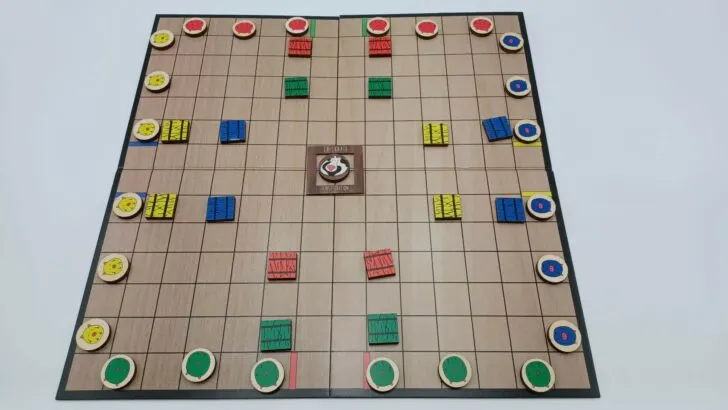
Playing Chickapig
You will begin your turn by rolling the die. The number you roll on the die determines how many moves you will make on your turn.
You can use your moves to move:
- Your Chickapigs
- Your hay bales
- The cow
See the corresponding sections below to see how to move each type of piece.
During your turn you must use all of your moves. You can use all of your moves on one piece or you can use them on different pieces. You can move your pieces in any order that you prefer.
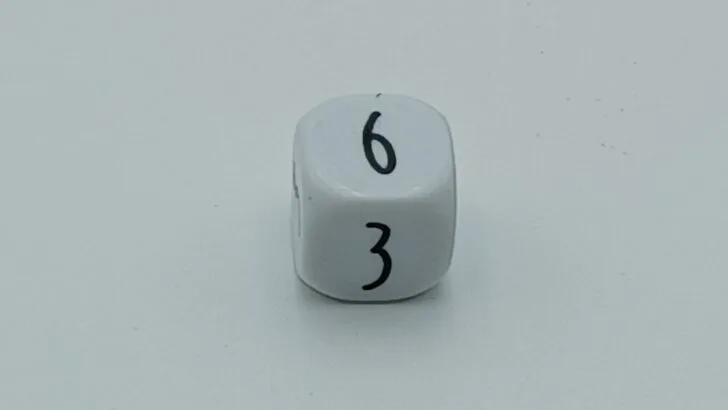
After you have used all of your moves, play passes to the player on your left.
Should a player take a long time to determine what they want to do with their turn, the other players can flip over the sand timer. The player then has the time left on the sand timer to complete their turn.
Moving Chickapigs
Chickapigs are your main piece in the game. The ultimate goal of the game is to move all of your Chickapigs through your goal on the other side of the board.
When you choose to move one of your Chickapigs, you must move it in a straight line. You can move them forwards, backwards, left and right. You may not move them diagonally.
Once you have chosen a direction to move your Chickapig, it will keep moving in the direction that you have chosen until it has run into another object. Objects that stop the movement of a Chickapig include:
- Other Chickapigs
- Hay bales
- Cow
- Cow Fence
- Edges of the board
- Sides of the Goals
When a Chickapig encounters another object, it will stop in the space before the object that blocked it.
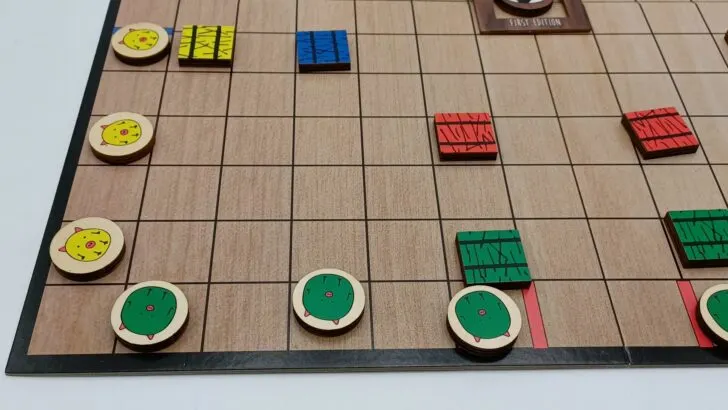
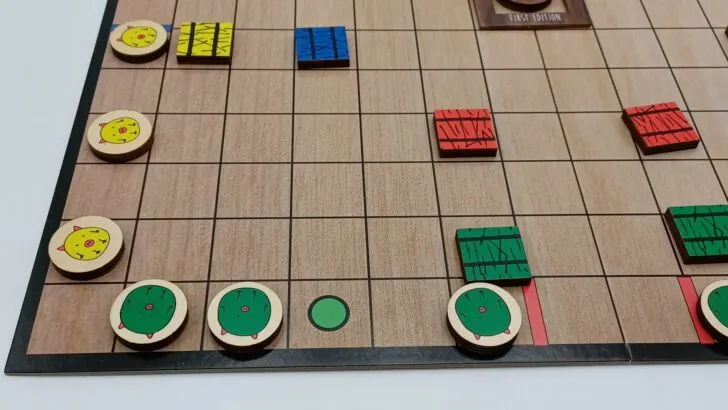
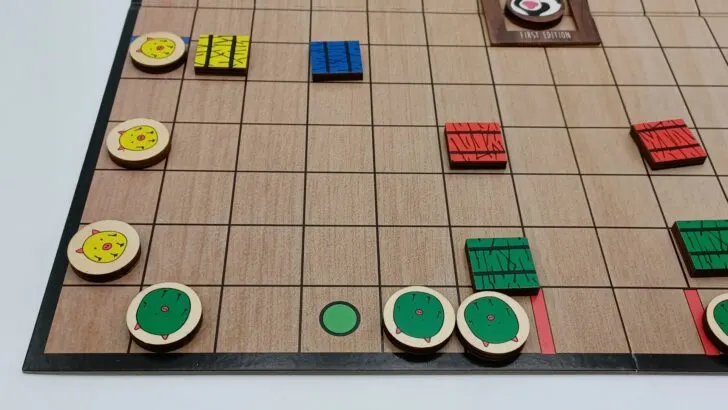
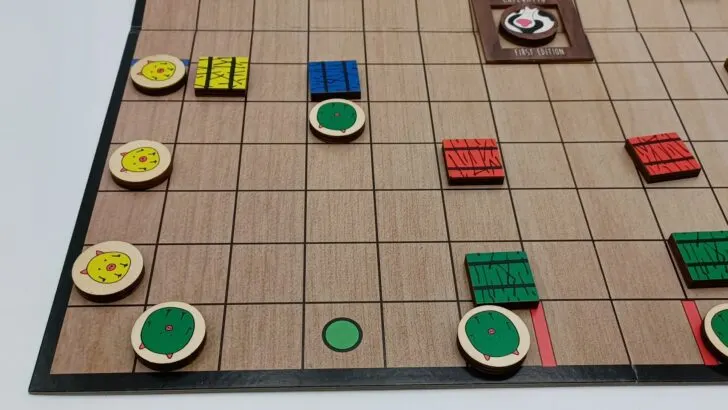
No matter how many spaces a Chickapig moves in one direction, it will only count as one move. If you move it in more than one direction, each direction you move it in counts as one move.
You may only move your own Chickapigs. You also can’t move your Chickapigs into another player’s goal.
Once you move a Chickapig through its corresponding goal, you will remove it from the gameboard.
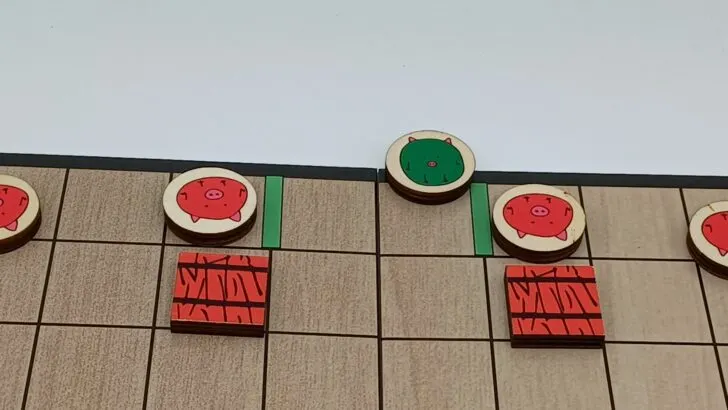
Moving Hay Bales
Unlike Chickapigs you do not have to move your hay bales through the goal. Instead you want to use the hay bales in offensive and defensive positions. You can use them as blockers to create a path to your own goal for your Chickapigs, or they can be used to block the path to an opponent’s goal.
When you choose to move a hay bale, you can move it forward, backward, left, or right. You cannot move it diagonally. Each space you move a hay bale, counts as one movement.
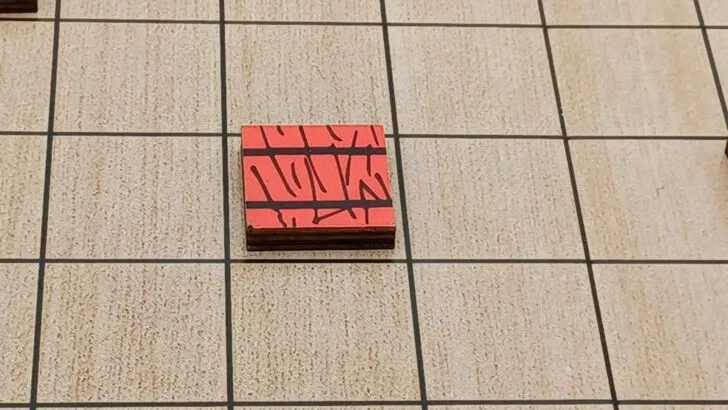
You can move hay bales to any open space on the gameboard. This includes spaces inside your own goal, or inside other players goals.
You may only move your own colored hay bales.
The Cow
The cow does not belong to any individual player. All of the players have the ability to move the cow.
To begin the game the cow starts in the middle of the gameboard and is placed inside the cow fence.
Whenever a player rolls a one on the die, they have the choice of moving the cow or making one movement.
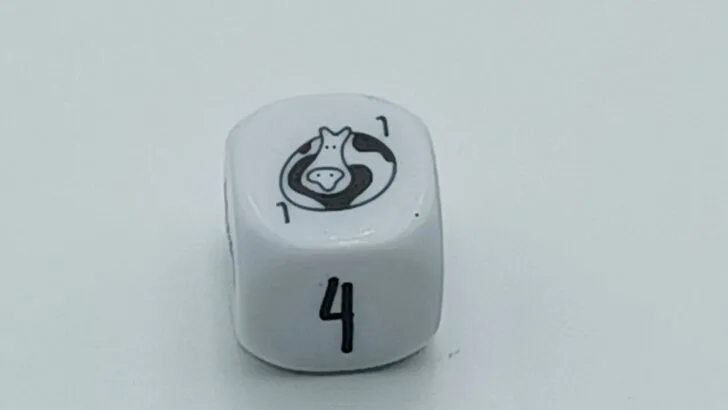
Should you choose to move the cow with a one, you can move it to any empty space on the gameboard. When you move the cow with a one die roll, you will place a poop token on the space that you move the cow to.
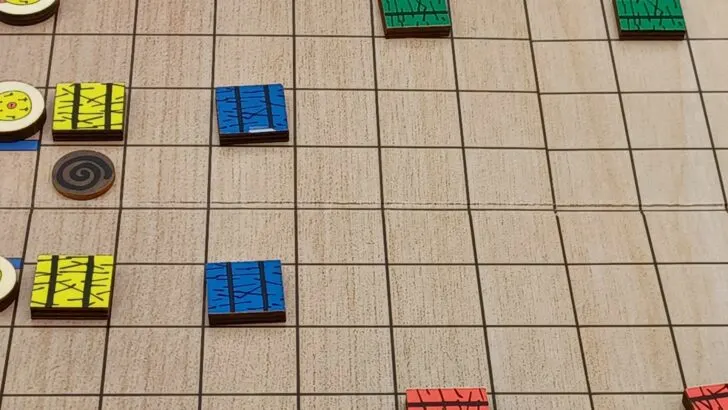
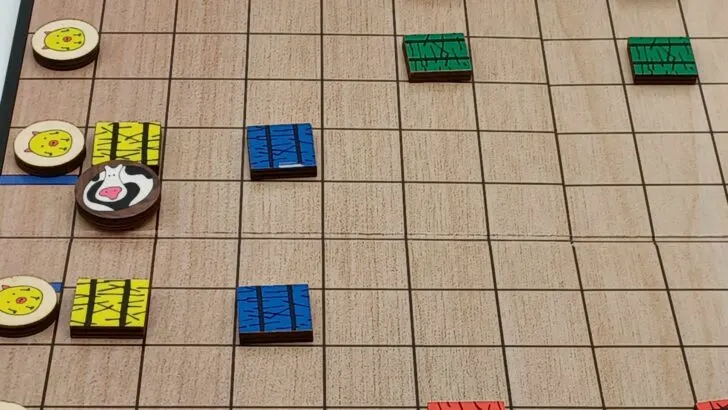
The first time a player uses a one to move the cow, they will remove the cow fence from the board. It will not be used for the rest of the game. Until the cow fence is removed, the cow can only be moved when you use a die roll of one.
After the cow has left the cow fence, you can move it like a hay bale. You can move it forward, backward, left, or right. You cannot move the cow diagonally. Each space you move the cow counts as one movement. When you move the cow with a die roll other than one, you will not place a poop underneath it.
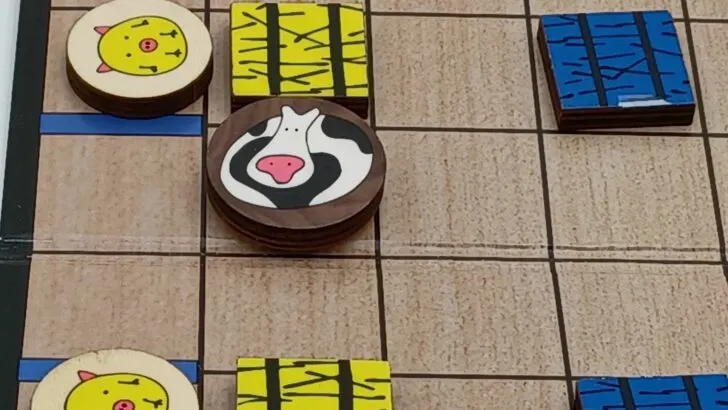
Poop
When you place a poop token on the gameboard, it stays on the space that you originally placed it on. It does not move along with the cow when the cow moves.
Whenever you move a Chickapig or a hay bale through a space with a poop on it, you remove the poop token from the board. Poop tokens do not stop the movement of a Chickapig. You will move through it like it wasn’t even there.
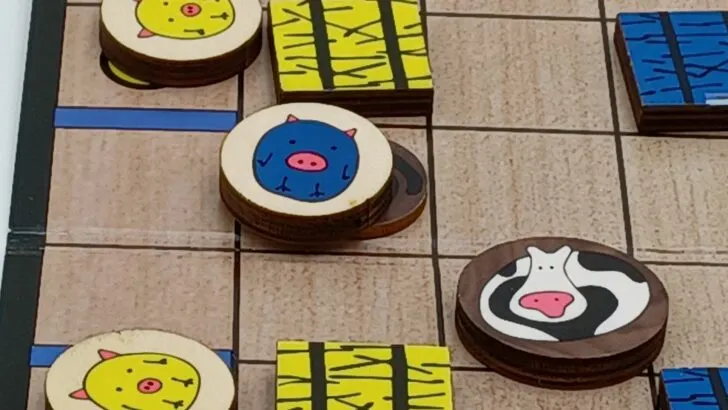
As a punishment for moving through it, you will draw a Poop Card.
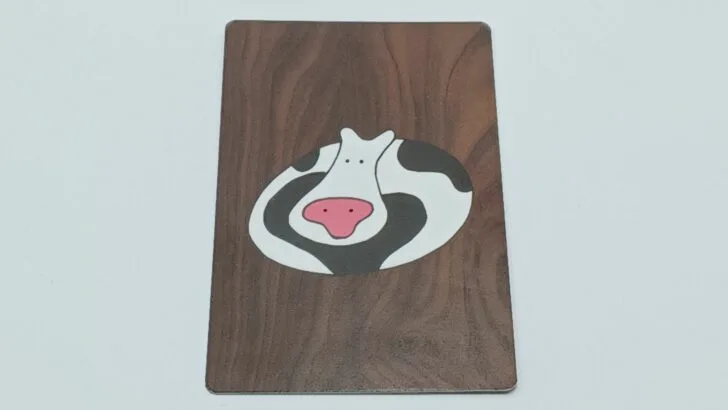
Read the Poop Card out loud and take the corresponding action at the end of your turn. Poop Cards always have a negative effect on the player that is forced to draw them.
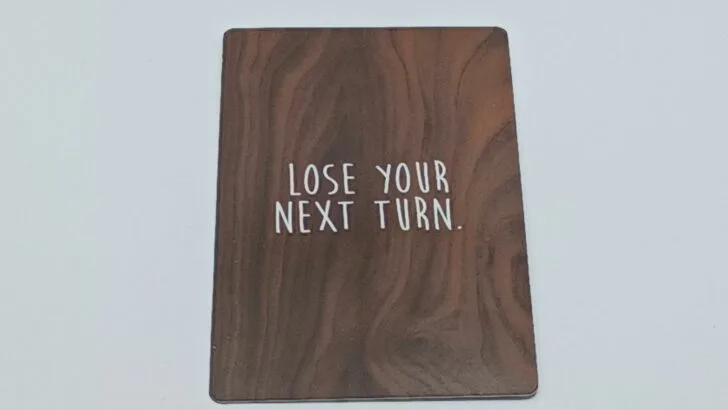
After you take the action on the Poop Card, shuffle it back into the deck of Poop Cards.
Should you acquire a Poop Card as you move your last Chickapig through the goal, you will have to resolve the Poop Card before you can win the game. If this prevents you from winning the game, you will keep playing.
Cows may move through a space that already has a poop token on it. You can’t place a second poop token on a space though.
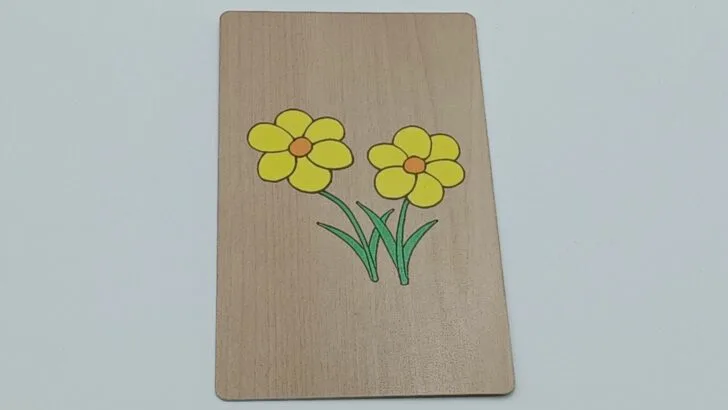
Daisy Cards
Whenever a player rolls a two, they can choose to forgo moving pieces. Instead they can choose to draw a Daisy Cards. All Daisy cards have a positive effect on the player that draws them.
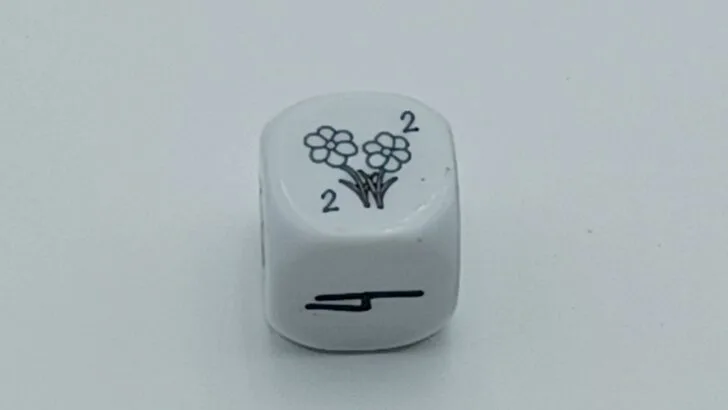
Once you draw a Daisy Card you will place it face down in front of you. You can use it on any of your future turns. You can’t use the card on the turn that you draw it.
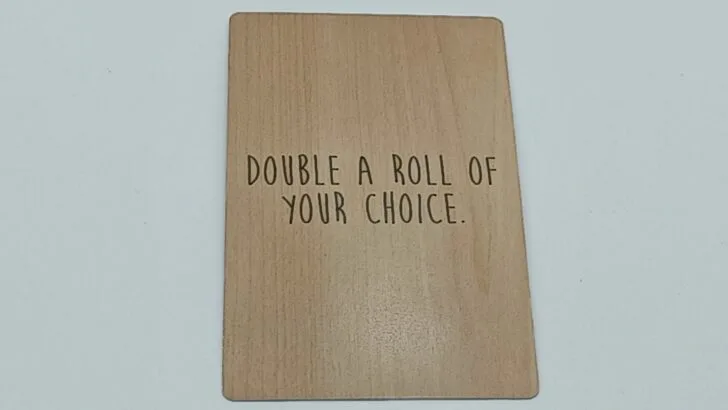
Each player can only hold one Daisy Card at a time.
Whenever a Daisy Card is played, it is shuffled back into the deck.
Blocking
In addition to trying to move your own Chickapigs into your goal, you want to prevent the other players from doing the same. You can use your own Chickapigs, hay bales, and even the cow to block the path to your opponent’s goals.
The one rule to blocking is that you cannot completely block off a player’s goal. At all times a player must have at least one path through their goal for each of their Chickapigs.
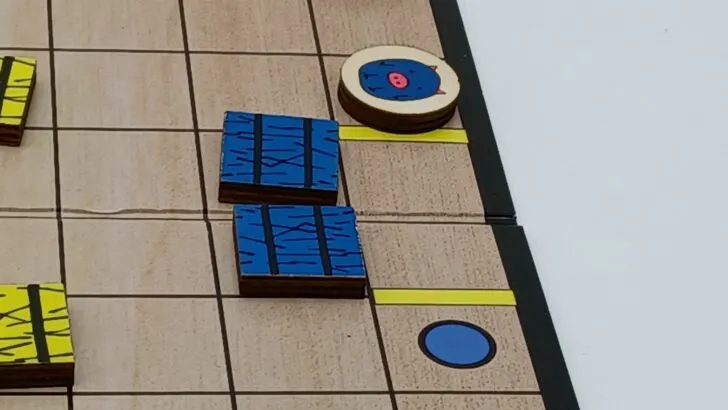
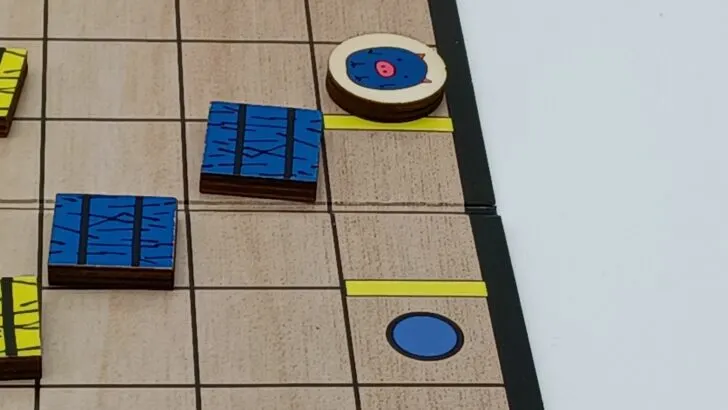
You may block off a player’s goal if on their next turn they can move either one of their own pieces or the cow to open up a path for themselves.
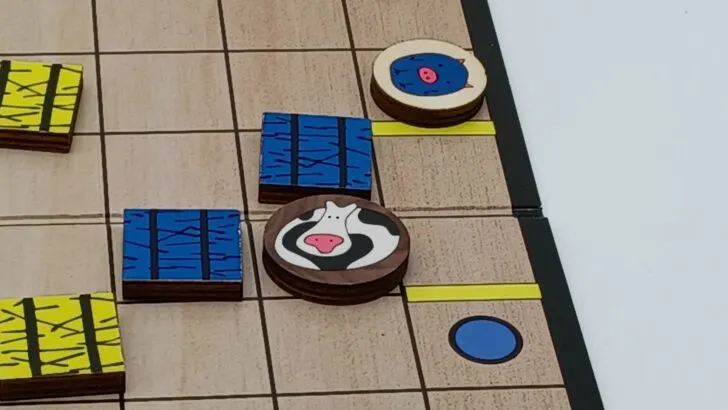
Turn Example
Below is an example turn in Chickapig. The green player rolled a six so they will have to make six moves on their turn. Here is one option of moves that the player could make on their turn.
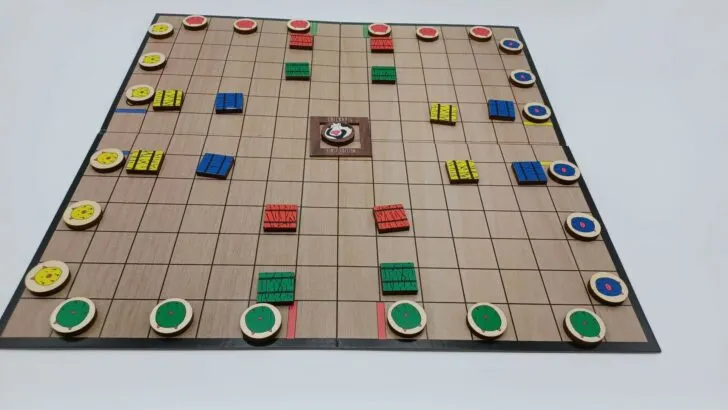
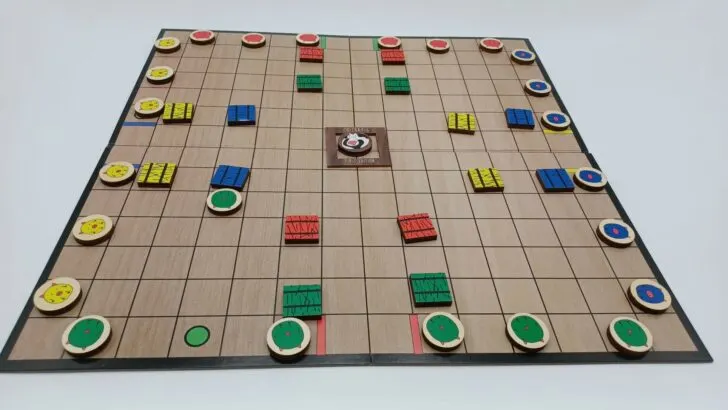
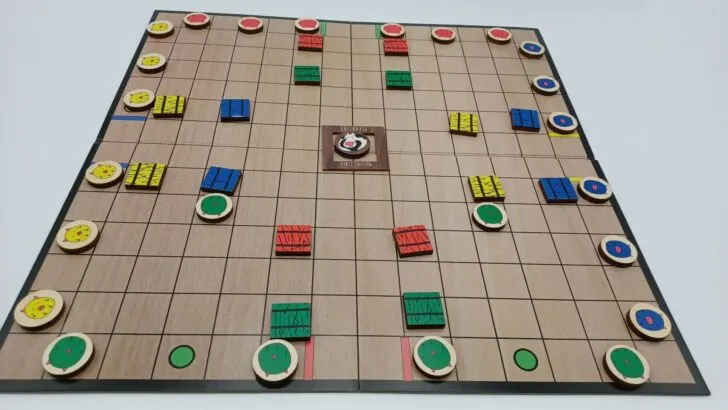
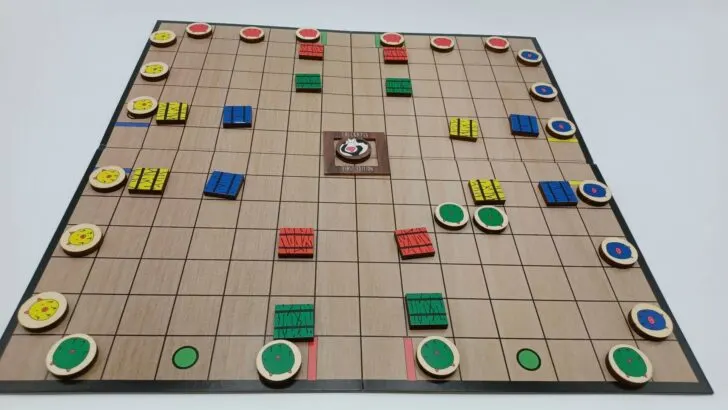
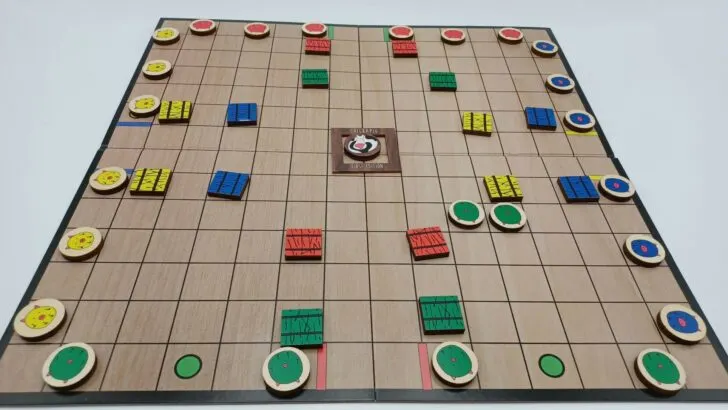
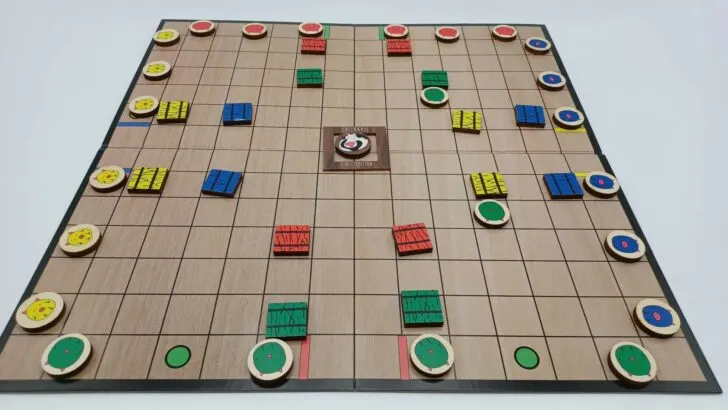
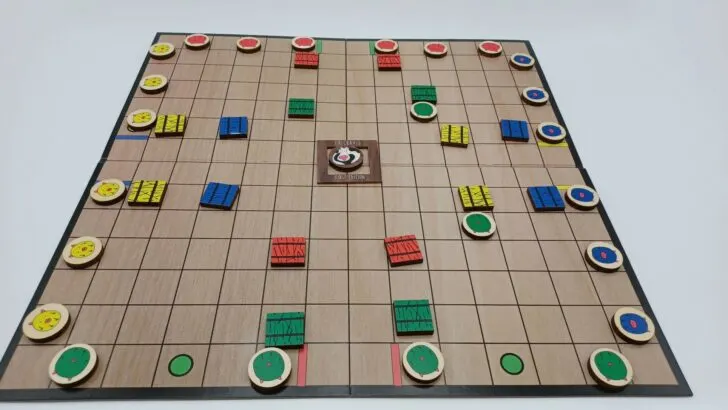
Winning Chickapig
The first player to move all six of their Chickapigs through their goal, wins the game.
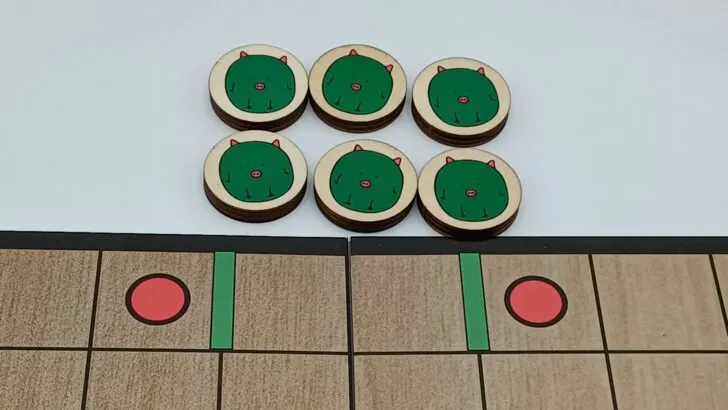
Two Player Chickapig
If you are only playing with two players there are two different options.
First you can choose to play with all of the pieces. In this case each player controls two adjacent colors. Turn the gameboard sideways. Each player controls the two colors in front of them.
During your turn you can move pieces from either of your colors. Each Chickapig has to go through its own colored goal though. The first player to get ten of their Chickapigs through a goal wins the game.
The other option is to play with each player controlling one color. Players should choose colors on the opposite sides of the board. Only place the pieces for the two chosen colors on the board. The first player to get four of their Chickapigs through their goal wins the game.
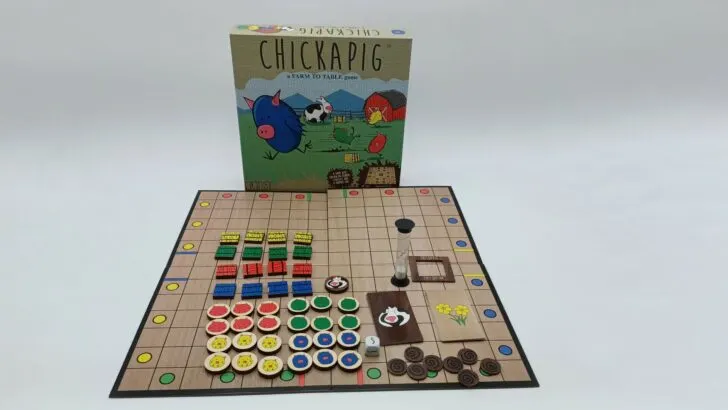
Year: 2016 | Publisher: Chickapig Farm, Buffalo Games | Designer: Brian Calhoun
Genres: Abstract, Family, Strategy
Ages: 8+ | Number of Players: 2-4 | Length of Game: 20-60 minutes
Difficulty: Light | Strategy: Moderate | Luck: Light
Components: gameboard, 24 Chickapigs, 16 Hay Bales, Cow, Cow Fence, 8 Cow Poops, 9 Poop Cards, 9 Daisy Cards, Sand Timer, Die, Instructions
Where to Purchase: Amazon, eBay Any purchases made through these links (including other products) help keep Geeky Hobbies running. Thank you for your support.
For more board and card game how to plays/rules and reviews, check out our complete alphabetical list of board game posts.

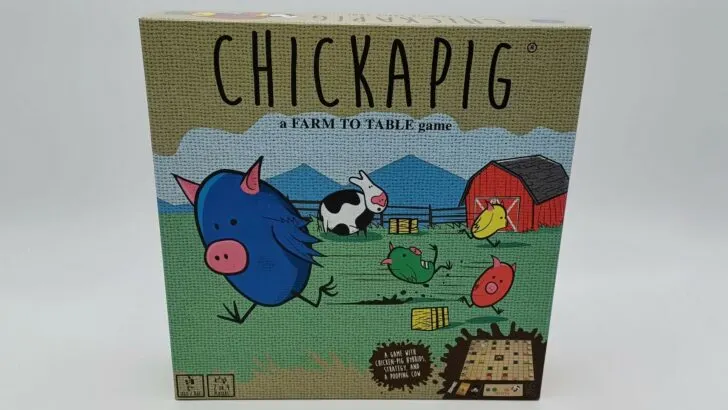
Andrew
Sunday 6th of August 2023
What happens if you have to pick two poops cards at the end of your turn and they both say "lose your next turn." Do you only lose your next turn? Or do you lose your next two turns?
Eric Mortensen
Monday 7th of August 2023
That is a good question. Unfortunately the official instructions don't specifically address what would happen if you draw two "Lose your next turn" cards at the same time.
Since it not specifically addressed the players should probably come to an agreement on how it should be handled. I personally could see it being handled both ways.
The case for losing your next two turns is that you would be ignoring one of the cards if you don't lose two turns.
At the same time though you can't really lose your next turn twice. If it said lose a turn I could see the cards stacking for two turns. Additionally a player losing two turns in a row is kind of harsh as it will make it really hard to come back from.
I personally would treat it where you would just lose your next turn. The punishment of losing two turns in a row seems too harsh. The rules also don't say anything about cards stacking and impacting future turns.
If the player agree to handle it where the player loses two turns though, that is perfectly valid in my opinion.